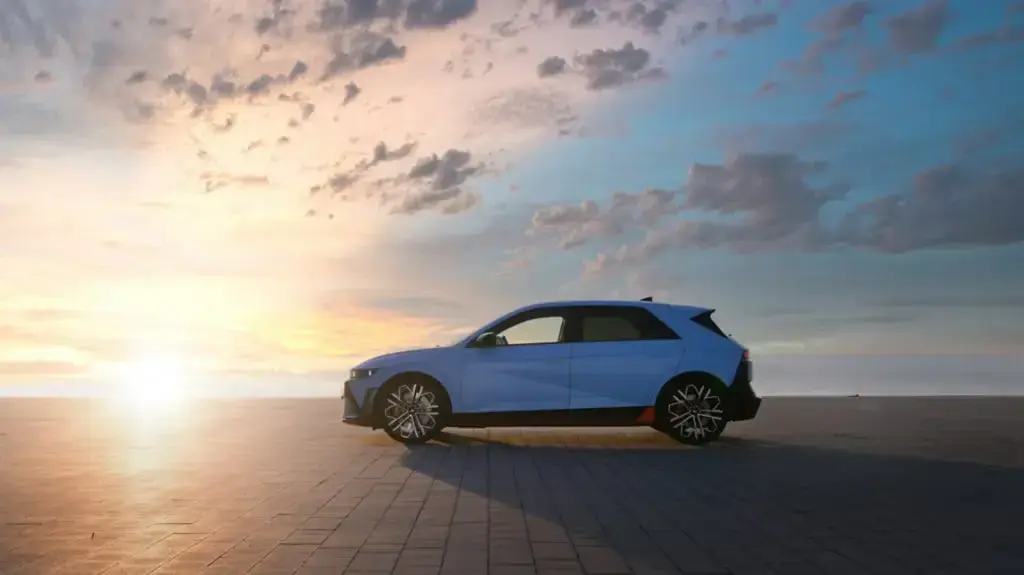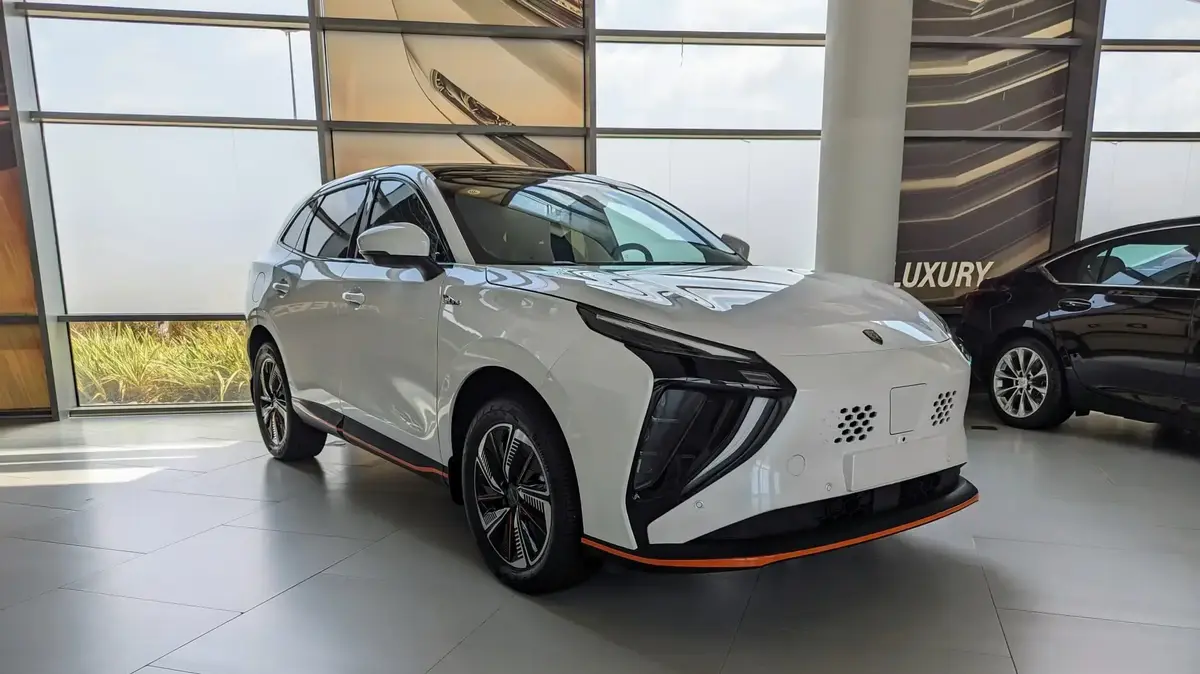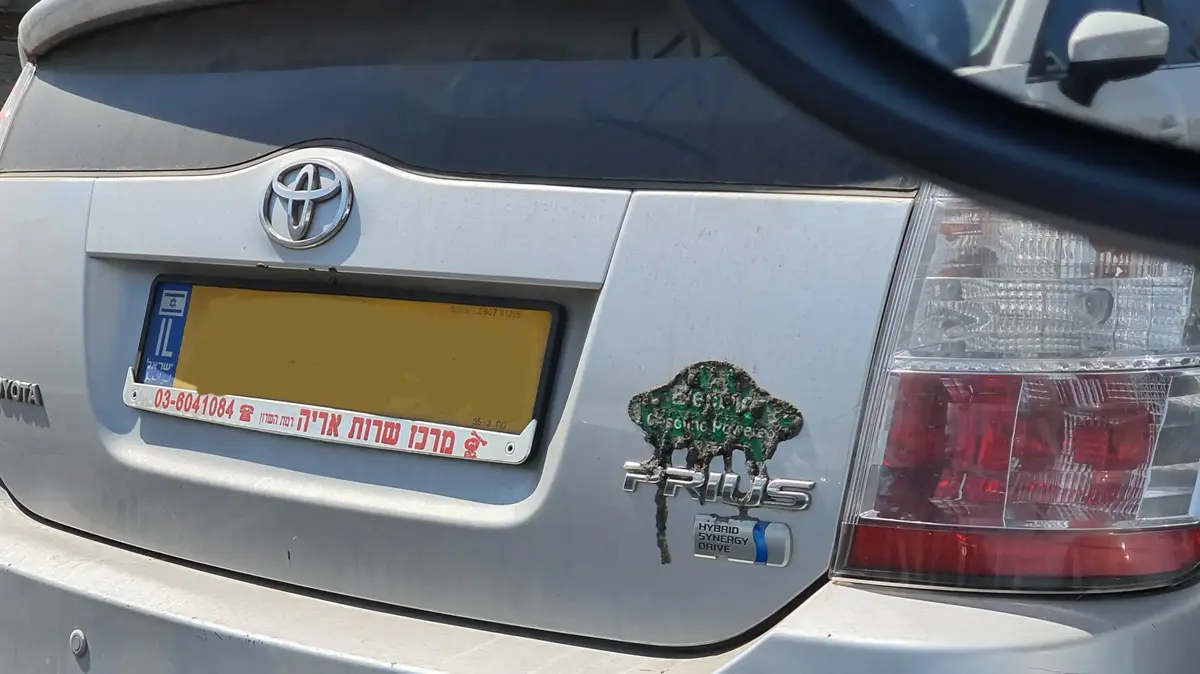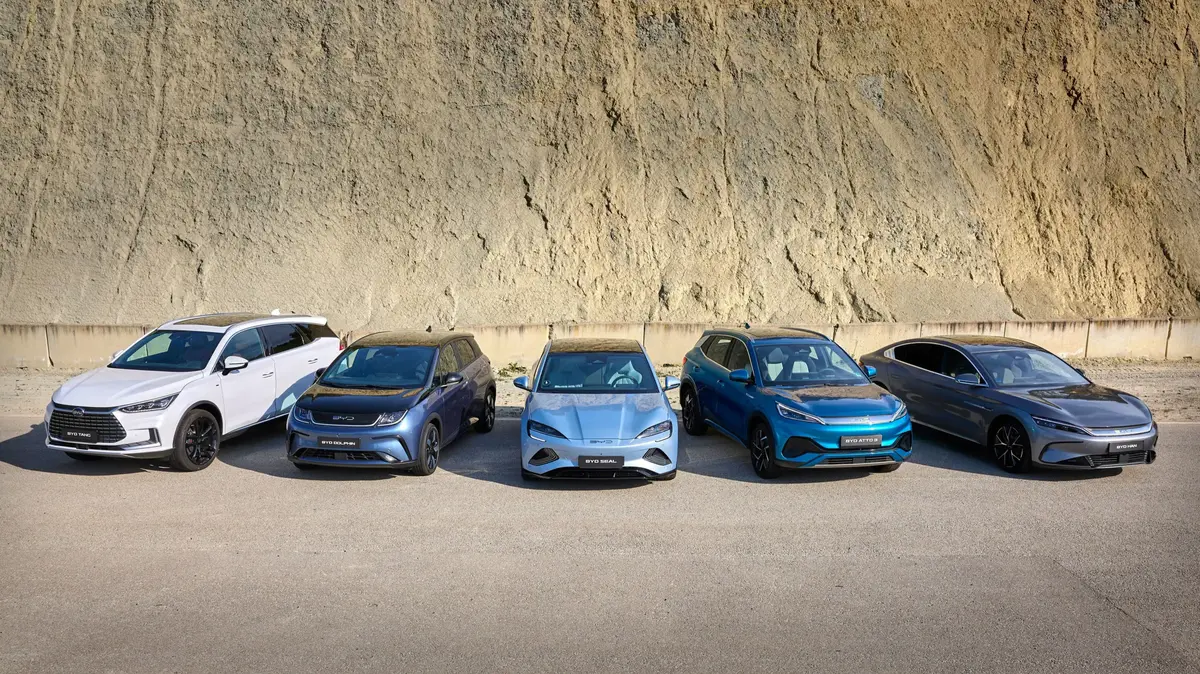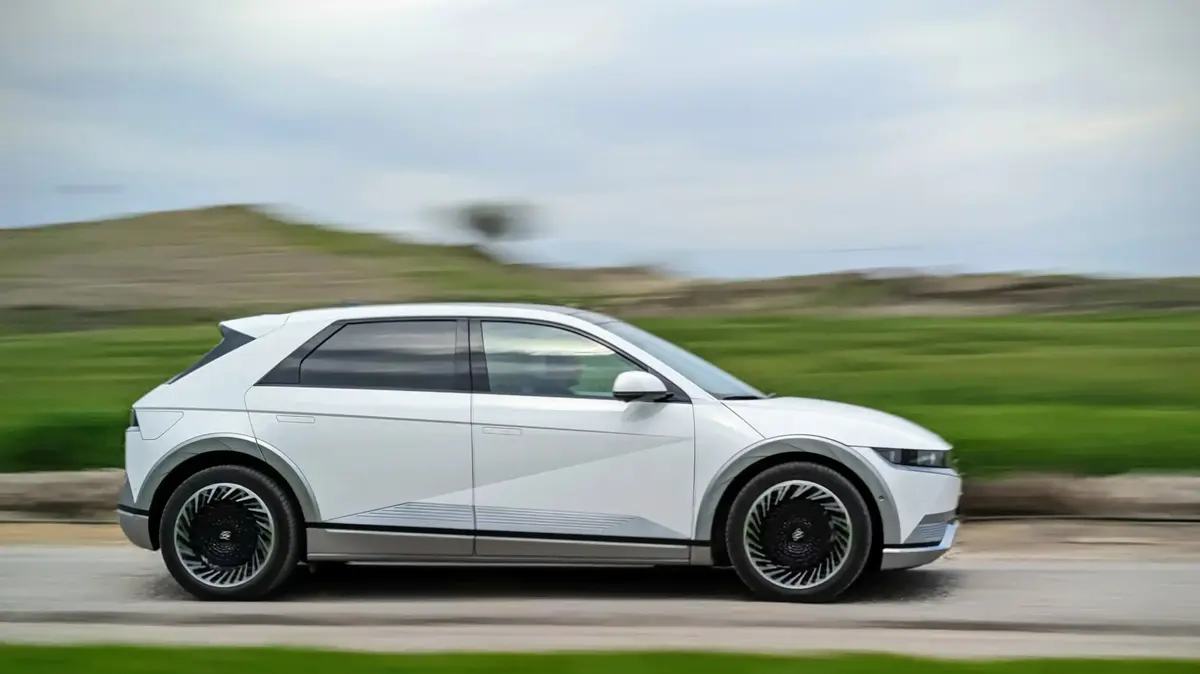Comparative: Hyundai Ionic 5 vs. Skoda Aniac and Skywell ET5
Everyone goes to electricity, go?
Sorry, everyone is running for electricity.
And on the face of it the business is similar with these three tools but the truth is that each of them tells a different story, only one of them makes it compelling
Keenan Cohen
22/12/2021
Wednesday, 22 December 2021, 08:30 Updated: 08:38
Share on Facebook
Share on WhatsApp
Share on Twitter
Share on Email
Share on general
Comments
Comments
There are tests where the dilemmas, gaps, differences and with them also the opinions we form about the cars accompany us throughout the day.
We debate at the end of the administrative section, and again at the end of the dynamic section, then on the comfort section, and also in the time periods where we measure trunk and seat height or admire the various accessories in the cabin, and when the notebook is full of comments and enlightenments sit for final decisions. Time.
Not only because there was a gap and difference between these cars, too, but not only - but because in each and every section each of them demonstrated a different approach, perception, execution and application so not only were the differences sharpened but also the order in which they stood on the podium at the end of the day .
More on Walla!
Analysis: What's behind Toyota's show of strength?
To the full article
Skywell ET5 goes for the mainstream look (Photo: Dudi Moskowitz)
on the outside
The differences in attitudes between these cars are already popping up in the parking lot.
Beautiful or not it is a matter of taste and we all know people with horrible taste.
But there are differences in the design style itself between these cars that tell something.
Hyundai, which is determined to break forward with an electric brand, has set up a car designed to the last detail.
From the hatchback configuration crafted in straight lines to the games with the lighting that are like half eighties and half futuristic.
At Skoda, a European manufacturer whose solidity, conservatism and stability is its second name more or less the business is trying to stay more loyal to the current model line.
The Skywell who is determined to penetrate the mainstream in Western markets does so with a dignified but also very generic look.
Here and there and from all angles it is too reminiscent of other cars, but well, China ...
Skoda maintains the look of brand identity (Photo: Dudi Moskowitz)
from within
Inside, too, the same order of perceptual differences between the three competitors is maintained.
In Skywell almost everywhere the eyes move there is something reminiscent of something from another car.
The floating screen is like in the Mercedes of a few years ago and so are the speakers in the doors.
The trim strips and air vents are reminiscent of Udi's from that era and the dial-shaped gear selector just looks just like the one in the Ford.
But his main problem is not copyright, but human engineering for which "Strange" is a real compliment.
It will send you rummaging through menus to adjust the regenerative braking power but the stability control cancellation button - this is about the most prominent place on the screen on a regular basis.
Same with climate control, trip computer and more.
Too many functions are on the screen and require too much fuss.
Hyundai went for a clear statement of intent (Photo: Dudi Moskowitz)
Skoda Aniak also does not surpass, with a digital dashboard too small to contain all the information so it is necessary to display part of it on the multimedia screen through which the other systems are also operated and of course this nonsense of volume control with finger movement on a plastic strip, came on Skoda .
So out of those three Hyundai is found to have the better driver environment.
The size of the screens, the display, the most normal operation for the various systems and with it all still with all kinds of flashes like a moving center console, a completely flat floor, not all testers agreed, but I even liked the "reverse" gear selector which rotates the forward lever to -D.
Skoda Aniac, a small dashboard and a generous multimedia screen (Photo: Dudi Moskowitz)
behind
In the rear seats is reflected the dimensional advantage of these cars and the freedom that an electric platform allows to play with the passenger compartments.
They all have tremendous space in the rear, but the Skywell is the best, in seat width, depth and also in the armature of 220 and USB socket, air outlets, adjustable armrests, passenger seat control, luxury-looking upholstery and more.
That does not mean that the Ionic 5 and the Ianyak have a bunk in a slave ship does it?
These are among the most spacious rear seats available in this price range and also the armature in them is given generously.
Each has points here or there, in Hyundai the backrest is adjustable, in Skoda there is climate control with separate control for those sitting in the back, in Hyundai the air outlets in the side beams, in Skoda more pleasant padding - so the business ends in a draw.
The best combination of appearance, usability, space and human engineering in Hyundai (Photo: Dudi Moskowitz)
Right behind
In the trunk, according to the measurements we made, the Skywell has the best data in terms of width, cabin height and threshold height - but these do not tell the true story.
Except for an electric door, this cell has nothing to offer in the worlds of practical solutions.
Without hanging hooks, compartments, anchor rings or 12V socket and limited flattening of the rear seat.
Hyundai has a wide and comfortable charging key, lashing rings, a lower compartment for storing the charging cable and also comfort accessories such as a 12V socket and its seats can be folded at a good angle - but its limit is the height dictated by the rear shelf leaving only 37 cm between it and the cabin floor. To that of Hyundai with a few more compartments here and there, here there is folding for seats directly from the trunk but only up to a limited angle and not completely flattening as in the Ionic 5. And yet its structure and practical thought gives it the points in this section.
Wealth equipment but there is something to improve in Skywell's human engineering (Photo: Dudi Moskowitz)
Passengers
The test begins with inter-administrative driving at the legal speed and speed of traffic.
The road has a more or less equal amount of ups and downs on the other side and all the cars are driven at a uniform pace and manner.
The Skywell has a comfort that comes from relatively soft damping in the shock absorbers, but it disappears under the non-glossy impression that makes its noise isolation and isolation.
We know it's harder in an electric car without the screen engine noise, but here it was very noticeable.
In fact it and less good seats are mostly what prevents it from screwing higher in this section.
In the Skoda, the comfort is of the European type and very restrained, it will be less pleasing to those who find it comfortable, this American swing raises road disruptions.
In Hyundai one can find the combination of good suspension calibration at its base with repairing the shortcomings of the other two, it is more balanced in its suspension operation comfortably and has better noise insulation.
The most space and armature also in the back of the ET5 (Photo: Dudi Moskowitz)
All three provide agile performance for everyday driving conditions.
There are 204 horses in the Skivela and the Skoda and 217 in the Hyundai with a torque of 31.6 for the maniac, 32.6 in the ET5 and the Hyundai leads with an advantage in this section as well - 35.7 kg. This means that even though they carry about 2 tons from place to place The Ionic 5 is ahead of the Skoda by a tiny half-car gap at 0-100 accelerations as well as intermediate accelerations that simulate a detour in the 50-120 km / h speed ranges.
Skywell was regularly third in this bunch.
Without gearboxes and complete availability of power it is the power and torque that set the tone.
The Skoda is the only one with separate control of the climate in the second row (Photo: Dudi Moskowitz)
In a hurry
In more dynamic driving the Skywell is the first to give up and surrender.
These are not just the obvious gaps between the one with front-wheel drive and the other two with rear-wheel drive.
It's just a badly calibrated vehicle.
With too much movement of the weight on all axles, understeer, too little precision in lowering the power to the road, too little sense of "trust me" in turns, steering wheel is very detached and has a frequently changing weight.
On the other hand, it is difficult to blame the Chinese for not harming a place they did not aim for in the first place.
Very good legroom, but slightly simple materials in Ionic 5 (Photo: Dudi Moskowitz)
The tight restraint banyak he exhibits in the administrative ride is not maintained when the pace picks up, he was still superb, but a little more "diffused" in controlling the body in twists and turns.
The Ionic 5 on the other hand was a very refreshing surprise, from such a clumsy chassis and a car that weighs so much not really expecting too much.
And yet, the level of grip is very high and on sufficiently slippery roads it is also possible to pull out the tail nicely for a little skating.
From the steering wheel there is no feedback, but it is fast, accurate and has very good weight (i.e. how much it is turned and the corresponding response of the car to it).
Of the not-so-good brakes of these three cars, his were the least annoying to use.
Be the first to signal "It's not for me" on the winding road (Photo: Dudi Moskowitz)
Ranges and loading
As usual, the power consumption of the cars was tested at three points - after the interurban administrative chapter, after the dynamic section and again at the overall end of the test.
To be clear in advance, these are perhaps the three least ideal driving conditions for electric cars, so the ranges here are only relevant for comparing these car in these conditions and even then not really accurate.
This is because in comparative tests we conduct a number of acceleration tests for each car that steep the power consumption and also drive several times the dynamic sections, again, ones that increase consumption significantly.
Lots of grip and precision, but not really fun to drive (Photo: Dudi Moskowitz)
Having said that in terms of power consumption, the Skywell was the most economical in the test summary with 6.2 km / h per battery, but it should be taken into account that its less dynamic capabilities also meant that driving it in the demanding sections was slower.
It is followed by the Ionic 5 with 4.1 kWh per km and the Skoda which is also the heaviest of the three with 3.7 kWh per km.
Again, as with fuel consumption in regular cars, the average customer is likely to derive significantly better numbers from the Ionic 5 and Skoda.
For example, in slow and conscious driving, the Ionic 5 has improved its data to 7.6 km / h, which means a realistic range of over 500 km.
The best of the three on the road.
Both in the administrative part and in behavior (Photo: Dudi Moskowitz)
Like the ranges, the declared charging times of the manufacturers are becoming irrelevant.
Routine charging is dictated in any case from what you can get from the outlet or charging station in your home.
At public charging stations, on the other hand, you will be limited less by the car's "pumping" capacity, but by the function of the charging station itself.
In any case, the Ionic has the ability for the best charging speed, and then the Skoda and the Skywell are the least fast to charge in terms of pace.
Skyvel has the largest trunk, but also the most basic and simple (Photo: Dudi Moskowitz)
safety
These three cars place a battery of very good safety systems on paper.
All three have lane departure correction, automatic braking, pedestrian detection, adaptive cruise control and automatic lighting control.
But here the Skywalker was forced to stop on the sidelines with the lack of systems like cross-traffic detection, vehicle detection in "dead space" and automatic braking in reverse and also without a EURO Ncup crash test score in which the others achieved 5 stars.
Of the two remaining Ionic 5 gets a few more safety points over the Cognac with actively preventing passage in vehicle identification in "dead space", warning of a passing vehicle before opening a door, cross-traffic warning at the intersection and warning to prevent forgetting a child in the back seat.
Volume, accessories and the best usability are in the Skoda (Photo: Dudi Moskowitz)
Epilogue
Just before the summary, a broader look at the meanings derived from this test.
Those who feed only on the site headlines may get the impression that in Israel there is a majority of electric cars on the roads.
The truth is that by the end of the year the Israeli market is expected to register about 10,000 electric cars in 2021, a negligible number compared to the number of vehicles sold in it in total, but very significant compared to the increase in previous years. Fiat 500e for compact crossovers like the Geely Geometric C to luxury ships like the Mercedes EQS.
It is also significant that as we have said before, 2021 will not be a year of upheaval, it is still very far away, but it is the year when we can mark the point in time when the trams began their journey to the heart of the consensus.
Would have won more points if not for his height (Photo: Dudi Moskowitz)
These three cars will not be decisive in favor of the trams, not yet, but each of them the brand's first opening mine behind them in the world of electricity testifies that everyone without exception is already taking this event seriously.
Does your next new one have to be electric?
The answer is no yet.
As for the one after it?
I'm not sure anymore.
The most different look, a kind of futuristic retro eighties (Photo: Dudi Moskowitz)
Summary
These three cars proved to us that the field of electric vehicles has reached such maturity that already allows them to be a good alternative to petrol cars.
Maybe not for all people and of course the whole aspect of public charging infrastructure still needs to close a gap so that it can be relied on.
But for those whose alternative so far has been a crossover or Gippon in their price range and even cheaper by a few tens of thousands of shekels - in the overall calculation of maintenance and fuel costs, this is a huge savings.
The square design and dimensions make it stand out from the three (Photo: Dudi Moskowitz)
The Skywell that comes in third place in this contest is a Chinese delegation that proves that the electric age has created a very serious "line alignment", with an unfamiliar manufacturer putting in its first attempt a car that can first stand up to the contest, and also come out with points in its lap.
While these are in the realm of instrumentation and dimensions and not in aspects of human engineering, comfort and behavior.
To his credit, the cheapest price on the test, in this case, at NIS 185,000, is the better deal for those who are looking for a maximum of car and equipment for the shekel.
Different but not riotous (Photo: Dudi Moskowitz)
The deal therefore focuses more on the two remaining cars. The Skoda Aniac is the offer for those who want an electric car that will be the closest in terms of appearance, user experience and behavior to a regular car. We would not focus too much on the dynamic gaps, it's mostly a bonus. Its bigger problem is the price - it starts at NIS 190,000 and in the case of the test car in the lounge finish level costs NIS 229,000. In contrast, the Ionic 5, which is more impressive in most parameters and also brings with it the technological and innovative vibe of an electric car along with advantages in the field of human engineering, space, warranty (5 years versus 2 years and an option for another year in Skoda), behavior also costs less. Not only in the version being tested by "writers" at a price of NIS 200,000, but also in the one above which the elite is further equipped with NIS 217,000. And so he is the one who wins this test.
Participated in the test:
Rami Gilboa, Yoel Schwartz and
thanks to
Dudi Moskowitz
For help with image processing
Huge savings compared to gasoline vehicles at their price level with very few compromises (Photo: Dudi Moskowitz)
On the technical side:
Comparative: Ionic 5, Skywell, Aniac (Photo: Dudi Moskowitz)
vehicle
Vehicle tests
Tags
electric car
electric car
Skoda
Hyundai
Skywell




